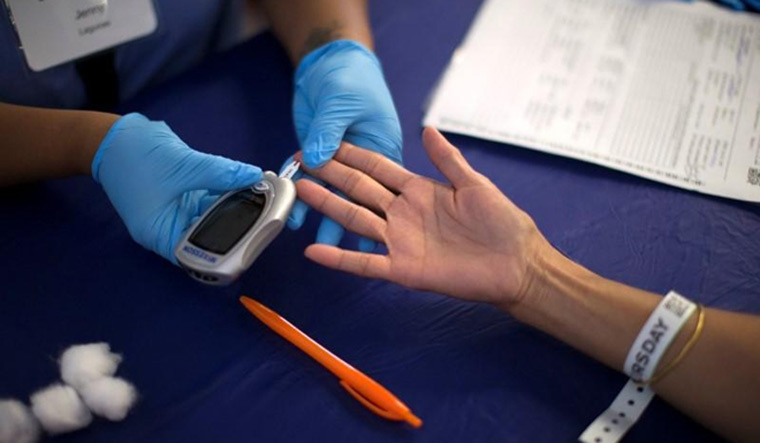Indian women are not getting enough of the sunshine vitamin and, consequently, are more prone to getting diabetes. A new study, published in the British Medical Journal in June has revealed that an inverse relationship exists between vitamin D levels and blood sugar levels, that is, lower the vitamin D levels, higher the blood sugar. Vitamin D may have a direct effect on the pancreatic beta cell function, thereby increasing insulin production, say the authors of the study.
The study conducted by Fortis C- Doc, AIIMS, Diabetes Foundation of India and National Diabetes Obesity and Cholesterol Foundation, found that Vitamin D deficiency was widespread in women—68.6 per cent women in India are vitamin D ‘deficient', 26 per cent women in India have 'insufficient' vitamin D, and 5.5 per cent had ‘sufficient’ vitamin D.
The study was conducted in North India, on 797 women aged between 20 and 60. It reveals the relationship between low vitamin D and high blood glucose levels in these women who are pre-diabetic. This is the first time such a study has been conducted in India, the authors claim.
The women were chosen after a careful screening process, which involved clinical assessments and bio chemical testing. The women were assessed on the following parameters: blood pressure, body mass index (BMI), fasting blood glucose (FBG), hydroxyvitamin D levels, demographic and clinical profiles, medical history (personal and family), socioeconomic characteristics, skin exposure to the sun and overall duration of sunlight exposure.
Findings suggest that women from lower socio–economic groups tend to have a higher vitamin deficiency than their counterparts in higher economic groups. Among women, the other group that is at a higher risk is post–menopausal women, who suffer from low calcium deposits in addition to low vitamin D deficiency, and consequently, bone damage.
“Previous studies had already established the link between the high prevalence of vitamin D deficiency and abdominal obesity. Those studies have also highlighted how diabetic patients have lower levels of vitamin D as compared to non-diabetics. Nine such studies, inclusive of both males and females, have been conducted,” said Dr Anoop Misra, chairman, Fortis C-doc, and one of the authors of the study. However, the relationship between vitamin D and the development of pre-diabetes, with a special focus on women, has remained unexplored, said Misra.
“In India, there is a need to understand this as women have a propensity to be obese, develop metabolic syndrome, consequent hyperglycaemia and thereby be at the risk of diabetes. The pace at which women are moving from the pre–diabetic stage to the diabetic stage is alarming. If this could be prevented by prescribing a cost effective vitamin D supplement, it would be truly amazing,” he added.
According to the WHO, diabetes is a chronic condition that has no cure. It occurs when the pancreas are unable to produce insulin or when the body cannot effectively use the insulin it produces. Diabetes is a major cause of blindness, kidney failure, heart attacks, stroke and lower limb amputation. The number of people with diabetes has risen from 108 million in 1980 to 422 million in 2014. In 2015, an estimated 1.6 million deaths were caused by diabetes. A healthy diet, regular physical activity, maintaining a normal body weight and avoiding tobacco use are ways to prevent or delay the onset of type 2 diabetes.


